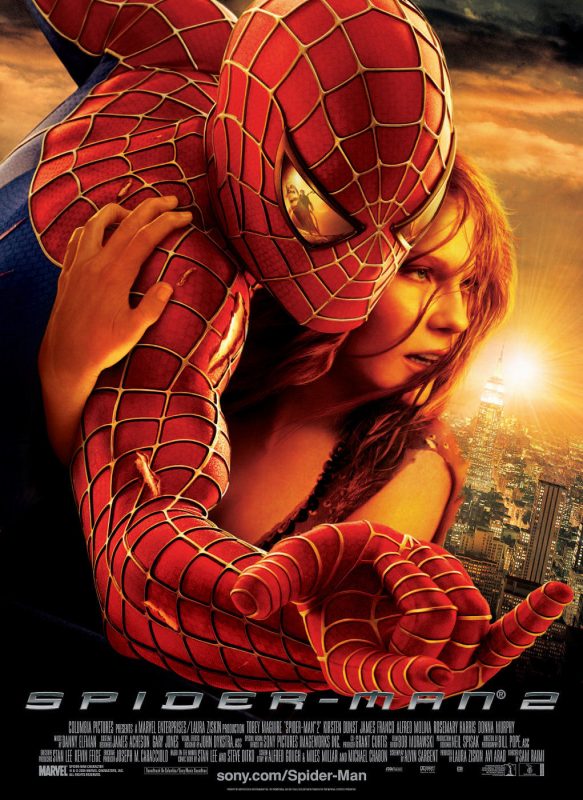Yoram Gross was Australia’s foremost animator. For three decades he directed and produced cartoons such as Blinky Bill and Dot the Kangaroo, many of which I watched as a child. He made cheap and charming pictures about kids who never grew up.
Gross, too, was almost a kid who never grew up. This memoir from 2011 reveals a side to him that I never knew existed.
He was born in 1926, and spent a childhood in Krakow and then an adolescence on the run, fleeing from town to town as Hitler declared them Judenrein (“Jew-free”). He moved from hiding spot to hiding spot, was on Oskar Schindler’s famous list, discovered a mass grave of decomposing bodies, was nearly killed himself several times, etc. It’s a fascinating and disturbing tale, and shines a new light on his art.
Did Gross’s experiences as a Jew in Nazi Poland shape his kid-friendly films? He says they did, and I’ll admit that it’s now hard not to see Blinky Bill as Gross in koala form: chipper, happy, optimistic…and with his iconic knapsack slung over one shoulder, so he can quickly flee.
Gross had a quick wit, and an acute sense of empathy. One of his earliest memories is of seeing a strip of flypaper, heavy with the corpses of helpless insects. He felt sad that the flies would never see their families again. Anthropomorphism is common among children, but it’s usually directed at a cat or dog. It takes imagination look at a disturbing thing with glistening jewel-like wings and swivelling compound eyes and see a consciousness inside.
His emotional sensitivity would later help him as an artist, but first it helped him survive. An Animated Life is filled with picaresque ugly details of 1930s Poland. Such as how, if you were the Jewish student at school, you had to be careful around stairs. Someone might push you down them, because you’d killed Christ.
As Hitler’s fist tightened around Poland, Gross and his family developed an “ear” for knocks on the door. A polite knock? A neighbor on a social call. A hard, officious rap? The Polish police. A hammering fist? The Gestapo. He describes how a German officer entered their house one day uninvited, sat down at the grand piano in their living room, and began playing. Gross’s mother hesitently complimented his technique, and was ignored. The Nazi officer then closed the lid and ordered them to either sell or destroy the piano. Why? Because he was taking possesion of the house and didn’t want a piano in his living room.
Gross was lucky to survive. He met some nice people, such as family who fed him when he was starving; and some not-so-nice people, such as a corrupt “shmaltsovnik” who extorted his family for tens of thousands of zlotys. He outright picked death’s pocket several times, and his narrow escapes can have a sense of Fellini-esque absurdity.
One day, a group of a group of cops held him up. They were not duped by his blond hair and pretense at being a Catholic, and threatened to shoot him for some imagined offense. Gross begged to be let go—”I have vodka! I’ll share it will you!” They agreed with this plan, and Gross ran back home, wondering if he did have vodka in the pantry. Luckily, there was some. The men got blackly drunk, and forgot that they’d ever intended to kill him.
Gross entertained them by playing his mouth organ, which is another thing I learned in the book: Gross never intended to be a filmmaker but a musician. He backed into movies largely by mistake. How did he end up as the director of children’s movies about animals? Was this, too, informed by his experiences?
Animator Ralph Bakshi once said “The idea of grown men sitting in cubicles drawing butterflies floating over a field of flowers, while American planes are dropping bombs in Vietnam and kids are marching in the streets, is ludicrous.” For some of us, though, butterflies and flowers are a correct response to the horrors of war; as is studied lightness, and the mysterious world of animals. No kangaroo will push you down stairs because you killed Christ. Gross has a lot of trouble with religion in general, and the idea of a loving God (as do many Jews who lived through the Holocaust—“If there is a God, He will have to beg my forgiveness”), and there is nobody more devotedly atheistic than an animal. A Holocaust survivor drawing “butterflies floating over a field of flowers” might not be as surprising as it sounds.
Gross’s movies often incorporate incongruous sinister moments, dark pits of lingering shadow. Things such as the House of 100 Doors in The Magic Riddle and The Bunyip sequence in Dot and the Kangaroo still echo in my memory. The bush is bright and sunny, but lift up a stone, or put your foot through a rotted log, and see the crawling, chitinous underclass. Underneath everything is a dimension of slime and mold and bugs, holding the daylit world aloft on its shoulders.
And perhaps Gross never wanted to make children’s films at all. He started out as a musician, playing mouth-organ for a Polish radio station. In his earlier years in Israel, he made experimental, arthouse films. Some of these won awards, but are now very hard to track down. He moved to Australia in 1968 with his wife Sandra, and continued making obscure “film festival” fare. He learned simple stop-motion animation techniques, and then progressed to 2D drawings.
Gross wasn’t personally religious, but he did have a sense of Tzedakah—charity. In 1977 he made his first feature-length animated movie: Dot and the Kangaroo. A girl is lost in the woods, and is saved by a kangaroo, with whom she shares a special bond. The film was partly made out of a desire to depict Australia, and to give something back to a country that had been good to him.
Good intentions can backfire. Dot and the Kangaroo is the kind of movie that gets called “problematic” today. The film’s depictions of Aboriginal Australians are stereotypical. The bunyip, a figure in Wemba-Wemba mythology, is reduced to a horror movie monster. And Gross doesn’t appear to know a whole lot about kangaroos. The animated kangaroo that accompanies Dot is female. But the live-action kangaroo they filmed at the end is…uh…conspicuously male. Nevertheless, Gross was onto something with Dot. It’s one of his better-known films.
His other early films include the Mia Farrow-narrated Sarah/The Sixth Match, which might be his most direct treatment of the Holocaust, The Little Convict (starring Rolf Harris, hyuk-hyuk), along with a seemingly endless stream of Dot sequels. Budgets expanded modestly, from low hundreds of thousands to about a million dollars each.
I should say here that Yoram Gross’s films are not masterpieces. When I watch them, my prevailing thought is “I wish this was better.”

Even when I was a child, Dot seemed shoddy and cheap, with cut-rate animation and sentimental, mawkish storytelling. Gross did the best he could with the little he had, but both then and now, I have little love for his movies. I’m sorry.
I dislike Gross’s signature style, which is “animated cels over live-action backgrounds.” This saved money—the Dot and the Kangaroo cost just $200,000 in 1977, at a time when Disney films were budgeted at twenty to forty times that—but mires the film in an unbelievable half-reality that has no chance of ever engaging the viewer. It takes a lot of technical skill to seamlessly merge 2D-animation with live action, otherwise all you see is how wrong the pieces fit together. Dot and the Kangaroo is no Who Framed Roger Rabbit. It’s not even Cool World. Dot never inhabits the Australian outback. She floats on top of it, as unconvincing as a mustache scrawled on a billboard.
These films, however flawed, are a foundational brick in the childhood of many people. Gross opens the book by reading some appreciative Youtube comments. He seems pleasantly shocked that his work still continues to touch people. I was shocked by the idea of a Holocaust survivor on Youtube, reading comments by TAYLORLAUTNERFAN69 and xXNyanCatXx. Not that there’s anything weird about that. It just seems like certain worlds should never intersect.
I was curious to hear what it was like running an animation studio in 1977, and I wish the book had spent more time on this. From where did Gross recruit artists? Who sold him equipment? How did he negotiate distribution deals with European and American companies? How did he make it all work?
I’m guessing the answer was “right place, right time”. Animation was moribund in the 70s—even Disney was in the doldrums—and this allowed a tiny studio like Gross’s to hack away some market share. You could shelve Dot and the Kangaroo besides Pete’s Dragon and Bedknobs and Broomsticks and it wouldn’t seem out of place. The emergence of foreign markets allowed Gross two (or three or four) bites at the apple: if a film bombed in Australia, it might sell in Germany or somewhere. The stars were aligned for a studio like Gross’s to exist.
All of that changed in the late 80s and 90s. Disney got their shit together and went on a blazing hot streak. Don Bluth and Warner Bros weren’t far behind. The first CGI films appeared, along with technical masterpieces like Who Framed Roger Rabbit and The Thief and the Cobbler. Western TV animation resurged, and anime hit the mainstream: I remember the day I walked into the Mascot Blockbuster and the shelves were laden with weird but interesting-looking things like Captain Harlock and Vampire Hunter D.
Competition was suddenly much fiercer, and Gross was unable to compete either at home or abroad. He didn’t have the money, and Australia has never been a hotbed for top-shelf animation talent. The “Australian” animated film that most people remember, FernGully, was actually made in America. Gross himself increasingly began to outsource labor to foreign studios such as Colorland Animation.
Gross kept his studio afloat in the 90s by merchandising the Blinky Bill character, which raked in about three million dollars a year. It was a bittersweet way to go out—no artist wants an empire built out of school lunchboxes and T-shirts—but at least it put his creative work in front of a new generation of children.
Yoram had come a long way from making experimental art films about the Holocaust. This creative shift is seen in the Dot movies. Nine were made from 1977 to 1994: the last few were bombs, and their repeated commercial failures forced the studio to cut their losses and focus on Blinky Bill.
The movies have no continuity, aside from the fact that they star a girl called Dot. In some films, she is transported into the (cartoon) animal world by eating a magic root. In others she’s a cartoon from the start, with no explanation given. In a couple of films (Dot and Keeto and Around the World With Dot), she has a brother, in others she doesn’t, etc. They are most interesting for the live-action segments, which give glimpses into regional Australian life at the time. The outback parts were filmed in the Blue Mountains, where my grandmother lived for decades. I wonder if she ever saw Gross or his crew…
The last film in the ennealogy, Dot in Space, finally puts Dot in a fully-animated world, but that animation remains as cheap as ever. It looks like a TV special and has a running time to match—counting the intro and outro credits, it barely limps over the sixty minute line. The series had lost whatever small gravitas and dignity it had long ago, and fully devolved into a sequence of idiotic capers.

Dot (now drawn by Nobuko Burnfield) got a makeover, and her new design was visibly anime-inspired. But we’re talking 70s Tezuka-style anime, with big eyes and circular construction, not 90s anime. The Yoram Gross Film Studio was playing catch-up and still ending up decades behind the times.
Gross launched a single desultory attempt at competing with Disney. 1991’s The Magic Riddle is weird and twisted, and not always in a fun way. Essentially a Cinderella re-telling with lots of other fairy tails shoved in, the film has a very nasty streak: the stepmother is a revolting harridan, her daughters are brain-damaged floozies, etc. “Cindy” herself is virginally pure and possesses nary a whiff of characterization or agency. It’s like a film conceived with the purpose of giving Germaine Greer a brain embolism. The film made a modest amount of money within Australia but failed overseas. This and Dot in Space mark the point where Gross abandoned making feature-length films, and focused on TV. Some of his former employees did interesting things. Longtime Gross artist/writer Ray Nowland (who may or may not have had a falling out with Gross) broke away and made the cult obscurity Go to Hell!!, which rides the 90s aesthetic as far as it will go into the sunset.
None of the above is found in the book. An Animated Life has little to say on the topic of animation. It’s primarily a memoir of Gross’s childhood years, and his experiences in the Holocaust.
How could it be otherwise? Gross witnessed years of unimaginable, nearly unparalleled horror. A grave opened in the earth, its black and hungry mouth swallowed six million…and he lived. Death passed him by, like the angel of the Lord. That’s the story his publisher wanted him to tell. It would be anticlimactic to spend the back half of the book talking about how he drew a cartoon koala.
And yet I’m struck by the sense that Gross shortchanged his own life. He was much more than just a Holocaust survivor. I’m glad he made it out…but what about his remaining fifty years? A boy became a musician. That musician became a filmmaker. That filmmaker became an animator.
The Holocaust might be most interesting part of Gross’s life, but it’s also the part he had the least control over. Mostly he’s just getting tossed about randomly by the Fuhrer’s winds. He’s not a hero. He’s a survivor. They are not the same thing. This book is not a tale of perseverence in the face of adversity. It’s a record of bad things happening to a nearly helpless child.
The bitter pill we have to swallow is that most Holocaust survivors, Gross very much included, survived by being lucky. You see this play out in the book, again and again. A kind stranger feeds him when he’s starving, clothes him when he’s cold. Remember the story about the police who were threatening to shoot him? It was quick thinking to bribe the soldiers. But suppose his mother had forgotten to stock the pantry with vodka?
Here is a quote from Roger Ebert that I think about often. (from his review of Elephant Man).
Wilfrid Sheed, an American novelist who is crippled by polio, once discussed this distinction in a Newsweek essay. He is sick and tired, he wrote, of being praised for his “courage,” when he did not choose to contract polio and has little choice but to deal with his handicaps as well as he can. True courage, he suggests, requires a degree of choice. Yet the whole structure of The Elephant Man is based on a life that is said to be courageous, not because of the hero’s achievements, but simply because of the bad trick played on him by fate.
I do not regard survivors of the Holocaust as heroes, or figures of inspiration, simply because they lived. Where does that line of logic take you? That the people who died deserved it, for not being brave or clever enough? I’m sure high intelligence would mitigate your chances of escape, but the Holocaust was not an IQ test, and geniuses died in Treblinka 2 and Chelmno along with all the rest. Perhaps it’s as the writer of Ecclesiastes 9:11 said: “The race is not to the swift or the battle to the strong, nor does food come to the wise or wealth to the brilliant or favor to the learned; but time and chance happen to them all.”
What about Yoram’s life after the Holocaust? The years when he had power, and expressed agency? There must be a story there, too. But as Gross passed in 2015, that story may remain forever untold.
No Comments »



